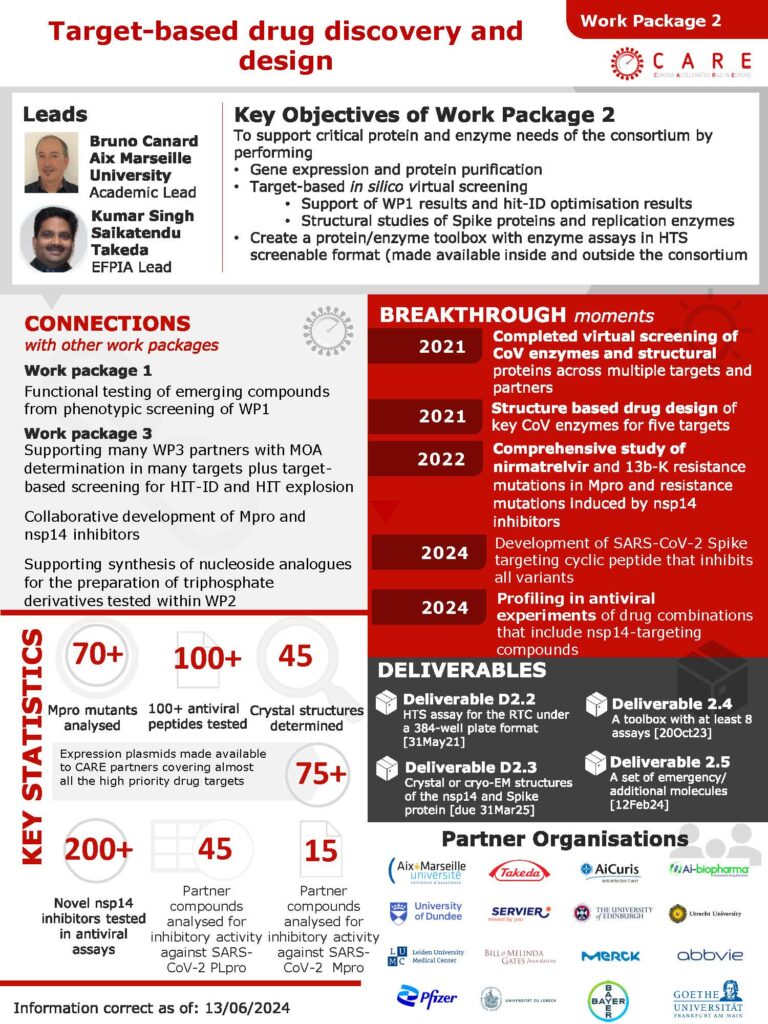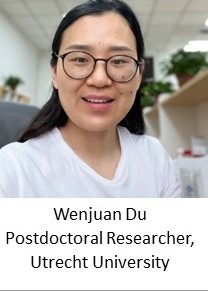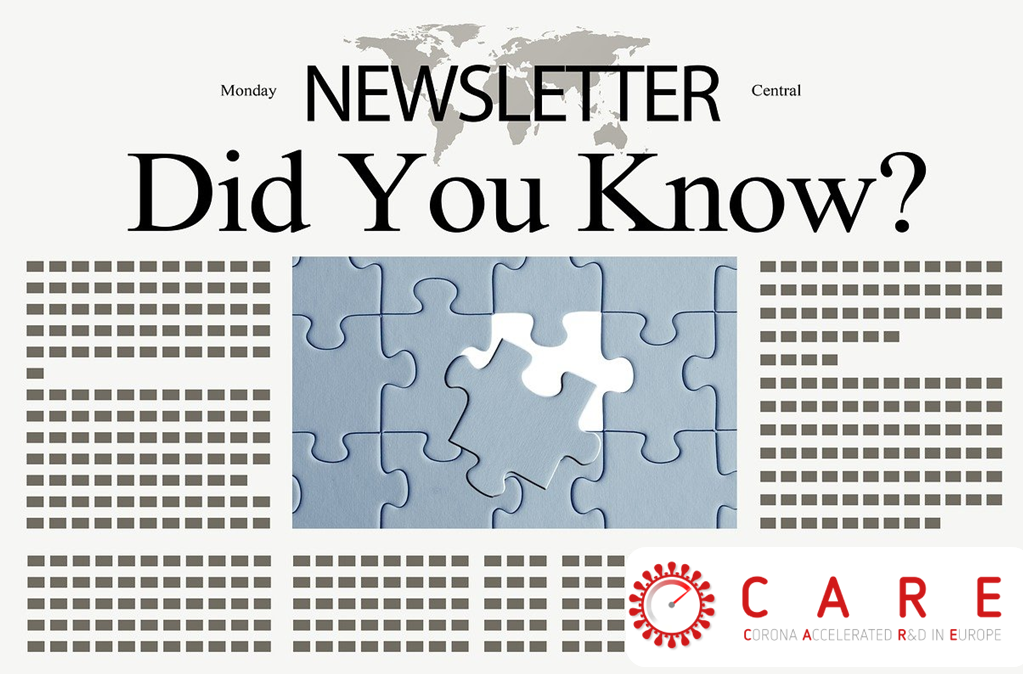What experience did you have working on a Public Private Partnership before joining CARE?
I had no experience of being in a consortium of this type within a research context. However, before starting my PhD in 2020, I was recruited as a Laboratory Scientist at one of the UK’s Lighthouse Laboratories that were responsible for the mass COVID-19 testing effort. These labs were only possible due to a huge collaboration between industry, academia, and government. Working at the Lighthouse Lab gave me my first insight into the importance, impact and challenges of this kind of partnership.
Why did you decide to get involved in CARE?
My PhD project within the Tait-Burkard lab aims to better understand the host factors involved in SARS-CoV-2 and other human coronavirus infections. This includes following up the results of an RNAi Druggable Genome screen which was conducted as part of the CARE work package 5 research. Starting my PhD during the pandemic and following the work in the Lighthouse Lab, I was motivated to align my research project with the pandemic response. I was inspired by the cross-disciplinary and well-supported team effort that IMI CARE champions and feel grateful to have this consortium as a network within my research.
How did your involvement in CARE come about?
I was encouraged in the planning of my PhD project by my supervisor, Christine Tait-Burkard, to be involved in CARE, given my interest in host factors, antivirals and pandemic preparedness.
Tell us about the work you have been doing in the CARE consortium
My role in the CARE consortium involves analysing and validating an in vitro RNAi host factor screen of SARS-CoV-2 as part of the aims of Work Package 5. I have generated hit lists of genes involved in SARS-CoV-2 infection from the screen, compared these to host factors identified in other published work, including results within our work package, and conducted pathway and network analysis of our hits. I’ve validated two clusters of hits from anti-viral and pro-viral pathways and begun to decipher their role in infection. Identified host factors in our screen are “druggable”, in that drugs exist that target them, or are they are predicted to be targeted with drugs based on their structure. To follow up the results of our screen, I have been testing the use of repurposed host-directed anti-viral therapies in SARS-CoV-2 infection in vitro and I am planning to take forward promising candidates to an in vivo study this summer.
What highlights can you share from your time in the CARE consortium so far?
The highlight from my time in CARE has been attending the annual meeting in March this year in Leiden. It was exciting to see my work presented and helpful to receive feedback from a global group of experts. I really enjoyed meeting researchers from across the consortium, learning about the development of multiple promising treatment options from across the other work packages and being a part of the strategic discussions for the future of the consortium as we prepare for the next pandemic. As an early career researcher, these conversations are not often made accessible to me – I appreciated the opportunity to have the insight into decision making processes at this level.
Why does this work matter?
This work matters because despite the vast amount of research conducted following the emergence of the third highly pathogenic human coronavirus in the past 20 years, we are arguably still some way from being prepared for the next pandemic. In particular, we are yet to find effective, broad-spectrum, “off-the-shelf” therapeutic options. Coronaviruses continue to burden human, animal and environmental health and there is a risk of further emerging strains. By understanding the host response, we can better understand the resulting disease and perhaps identify alternative or complementary approaches to direct-acting antivirals by targeting the host.
What are or were the biggest challenges you have experienced (and how did you overcome them?)
Challenges I have experienced include keeping up with the variants of concern that evolved in real-time during our research. This was overcome though collaboration with clinical scientists and teamwork within the Tait-Burkard lab. We divided the labour to harness different skills from different scientists doing different tasks, including growing virus, testing stocks, sequencing, and then running relevant assays that tell us more about how the latest variants interact with the host within human cells.
How have you benefited from your involvement in CARE?
I have benefited by gaining insight into leading research in coronavirus biology, meeting experts from across Europe and putting my research in the context of other work under the same aim.
What advice would you give to someone getting involved in a Public Private Partnership?
I would tell them to do it, grab the opportunities that arise and try to enjoy the feeling of being the least experienced person in the room – it means you have the most to learn!




